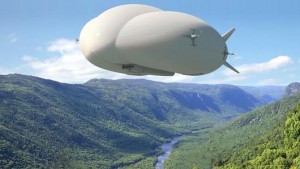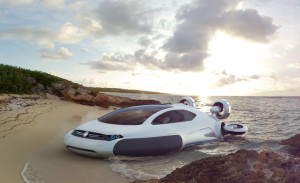As a general rule, within its borders each individual state holds title to the beds of water bodies that were navigable at the time of its statehood, and has jurisdiction to regulate activity upon those waters.[1] State authority over navigable waters is not absolute, however; in a previous post, for example, I discussed the limits imposed by the public trust doctrine. The “navigational servitude” is another important constraint on state power. It flows from the Commerce Clause and asserts “the paramount power of the United States to control [navigable] waters for purposes of navigation in interstate and foreign commerce.”[2] This power justifies, for example, the acquisition and holding of private lands “to deepen the water . . . or to use them for any structure which the interest of navigation, in [the government’s] judgment, may require.”[3] When validly exercised, the navigational servitude excuses the federal government even from the Fifth Amendment’s Takings Clause, because “the damage sustained does not result from taking property from riparian owners within the meaning of the Fifth Amendment but from the lawful exercise of a power to which the interests of riparian owners have always been subject.”[4] Today, however, the navigational servitude has largely retreated into obscurity. It is often viewed as a relic from a bygone era when rivers were the nation’s primary mode of commerce and long-distance travel.
 The advent of emerging technologies that will make water travel more attractive may catapult the navigational servitude to renewed prominence. In the not-too-distant future, transformational technologies like hovercraft and airships may become common modes of commercial and public travel over navigable waters. Integrating the resulting water-based activity into our legal and social systems would require involvement at all levels of governance, including the courts. In fact, a fascinating example of a related dispute has already reached the United States Supreme Court.
The advent of emerging technologies that will make water travel more attractive may catapult the navigational servitude to renewed prominence. In the not-too-distant future, transformational technologies like hovercraft and airships may become common modes of commercial and public travel over navigable waters. Integrating the resulting water-based activity into our legal and social systems would require involvement at all levels of governance, including the courts. In fact, a fascinating example of a related dispute has already reached the United States Supreme Court.
 Conceivably, both hovercraft and airships could revolutionize water travel for personal and commercial purposes. Hovercraft, smaller vehicles that slide on a pressurized current of air about nine inches above the surface, are able to fly smoothly over land, still or swift water, flooded or frozen rivers, and thin or broken ice at average speeds of 35 mph or more, and maximum speeds that are much higher. Advocates claim that hovercraft are among the most environmentally friendly modes of travel, using less energy and generating less carbon emissions than comparable craft. Future versions may be powered by hydrogen-electric motors. For longer trips or larger cargos, airships may be the answer. Manufacturers have been working for decades to develop them, and now claim that they offer significant reductions in fuel consumption compared to other air vehicles, while remaining significantly faster than today’s land and sea transportation systems. Increased traffic on water networks would also ease roadway congestion. No doubt, however, broad-based use of hovercraft and airship would require the construction of significant infrastructure, and the navigational servitude could play a role in those efforts.
Conceivably, both hovercraft and airships could revolutionize water travel for personal and commercial purposes. Hovercraft, smaller vehicles that slide on a pressurized current of air about nine inches above the surface, are able to fly smoothly over land, still or swift water, flooded or frozen rivers, and thin or broken ice at average speeds of 35 mph or more, and maximum speeds that are much higher. Advocates claim that hovercraft are among the most environmentally friendly modes of travel, using less energy and generating less carbon emissions than comparable craft. Future versions may be powered by hydrogen-electric motors. For longer trips or larger cargos, airships may be the answer. Manufacturers have been working for decades to develop them, and now claim that they offer significant reductions in fuel consumption compared to other air vehicles, while remaining significantly faster than today’s land and sea transportation systems. Increased traffic on water networks would also ease roadway congestion. No doubt, however, broad-based use of hovercraft and airship would require the construction of significant infrastructure, and the navigational servitude could play a role in those efforts.
Related issues have already reached the United States Supreme Court. In January 2016, the Court heard oral arguments on the question of whether the National Park Service may regulate hovercraft activities on rivers within national parks in the state of Alaska.[5] The merits of the case are tied up in whether the Alaska National Interest Lands Conservation Act (ANILCA) pre-empts such regulation, but the Ninth Circuit’s underlying opinion recognized that even if ANILCA requires that result, “the Federal Government would still retain significant authority to regulate [hovercraft] activities . . . by virtue of its dominant navigational servitude . . . .”[6] If, indeed, the servitude is a valid basis to prohibit hovercraft use in national parks, it could conceivably also authorize and regulate the use of similar craft – and even to create supporting infrastructure – on non-park lands. Whether the servitude is triggered only by activity in the water, as opposed to above it, is no doubt only one of the many interesting questions that courts will face.
(Hat tip to Professor Michael McChrystal, who brought the increasing relevance of airships to my attention in a recent conversation.)
[1] See PPL Montana, LLC v. Montana, — U.S. —, 132 S.Ct. 1215 (2012). As early as 1842, for example, the Supreme Court confirmed that as a constitutional matter, the original 13 states “hold the absolute right to all their navigable waters and the soils under them. Martin v. Lessee of Waddell, 16 Pet. 367, 410, 10 L.Ed. 997 (1842). This right has since been extended to all of the states that subsequently entered the Union as a necessary consequence of the “equal footing doctrine,” which directs that all states are coequal sovereigns. E.g., Lessee of Pollard v. Hagan, 3 How. 212, 228-29, 11 L.Ed. 565 (1845).
[2] Oregon ex rel. State Land Bd. V. Corvallis Sand & Gravel Co., 429 U.S. 363, 374 (1977).
[3] United States v. Cherokee Nation of Oklahoma, 480 U.S. 700, 704-05 (1987) (citing Lewis Blue Point Oyster Cultivation Co. v. Briggs, 229 U.S. 82, 88 (1913)).
[4] United States v. Rands, 389 U.S. 121, 123 (1967).
[5] Sturgeon v. Frost, No. 14-1209 (Argument held January 20, 2016).
[6] Sturgeon v. Masica, 768 F.3d 1066 (9th Cir. 2014) (citing Alaska v. United States, 545 U.S. 75, 116-17) (Scalia, J., concurring in part and dissenting in part)).
